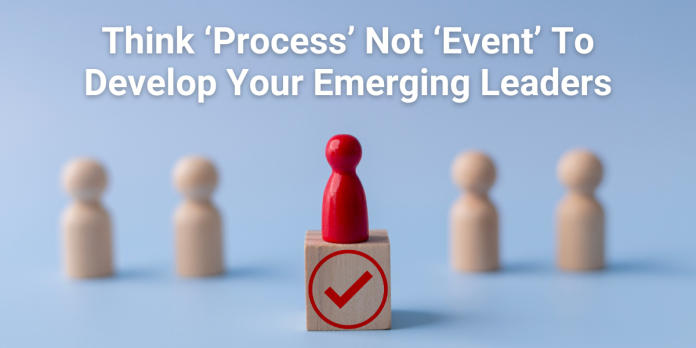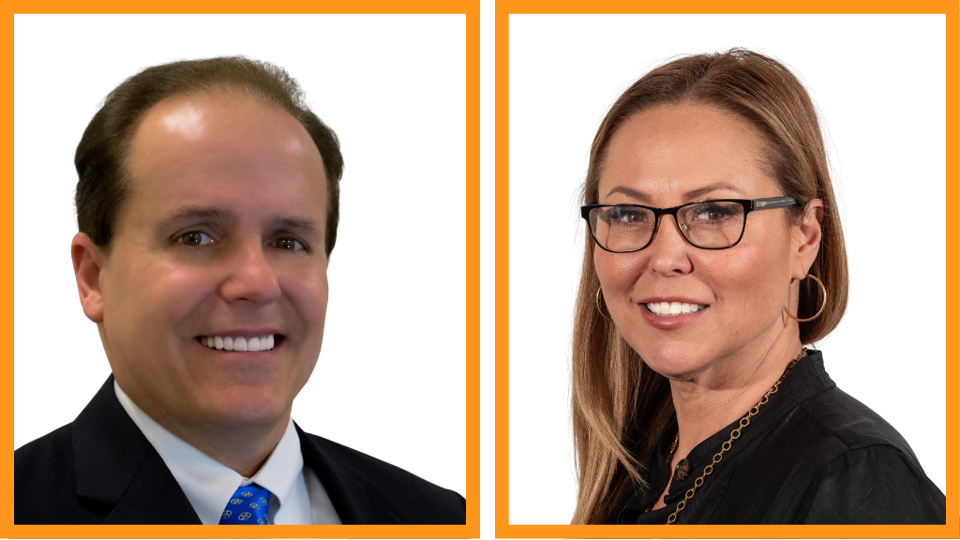
Leader and manager development is the number one priority for human resource (HR) leaders for next year, according to the Gartner Top 5 HR Trends and Priorities for 2024 report, based on a survey of 520 HR leaders. According to Mark Whittle, vice president of advisory in the Gartner HR practice, “In 2024, the HR function will be impacted by several key trends: an unsettled employee-employer relationship, persistent skills shortage, transformative technology innovations and pressure to achieve operational efficiencies.”
 One company that is rising to the challenge while leveraging innovative approaches to leadership development is the medical technology company Olympus Corporation of the Americas. I recently talked to Greg Adamson, Executive Director, Medical Sales Training, and Michelle Taylor, Senior Sales Training Manager, Selling Skills & Leadership.
One company that is rising to the challenge while leveraging innovative approaches to leadership development is the medical technology company Olympus Corporation of the Americas. I recently talked to Greg Adamson, Executive Director, Medical Sales Training, and Michelle Taylor, Senior Sales Training Manager, Selling Skills & Leadership.

The new Olympus Emerging Leaders Program (ELP) was born from the need to identify future leaders and give them a developmental path before they actually become managers. As Adamson explained, “The company recognized that the first-line sales manager, who we call the Regional Vice President, is the single most important job in the company.” Traditionally, Olympus, like most companies, followed the “buddy-to-boss” model, promoting successful sales reps directly to managerial positions. However, this approach often overlooked the vital developmental phase necessary to maximize leadership effectiveness.
Selecting Aspiring Leaders With High Potential
Recognizing this gap, Adamson’s team focused on the creation of a new 18-month-long program targeting high-potential aspiring leaders. A selection committee ultimately chose 20 participants from 40 applicants after a thorough application process that included a variety of data such as modeling of Olympus values, sales results, achievements (e.g., field trainer responsibilities, national impact and elite/quota performance), and an essay assignment based upon leadership competencies.
The 20 participants were then organized into smaller sub-teams to continue the journey together in cohorts. “I thought it was really important to form teams very early on so that they could start to get through the forming, storming, norming, performing stages,” said Taylor. These cohorts enabled effective peer coaching while strengthening relationships among the high-potential future leaders.
Pre-Assessments Establish Baseline
The program kicked off with two days of activities at a third-party assessment center. Activities included in-box exercises, team dynamics evaluations, and interactions with professional actors. These activities were designed to evaluate various leadership qualities, and each participant received individual debriefs.
Approximately a month later, participants completed a Hogan personality assessment. Hogan assessments are based on the gold-standard five-factor model of personality and provide a snapshot of Leadership Foundations, Leadership Emergence, and Leadership Effectiveness. In addition to a detailed written report, each participant received one-on-one debriefs on their strengths and developmental areas.
Competencies And Real-World Shadowing
The core of the program consisted of monthly “Classroom Clinics” organized around the Olympus Global Leadership competency model, typically three hours in duration, scheduled on Friday afternoons. Competencies included Strategic Mindset, Cultivate Innovation, Drives Results, Decision Quality, Balancing Stakeholders, Drives Engagement, Collaborates, Develops Talent, Instills Trust, and Situational Adaptability. A key benefit of these Friday afternoon lectures, in addition to skill development, was that the emerging leaders had a chance to interact with senior executives who were invited in as guest speakers.
Another feature of the ELP was a job shadowing component, where participants shadowed experienced managers in various roles within the organization. “They actually listen in during staff calls, they get to participate in the 360-degree rating, and even listen in on mid-year reviews,” explained Adamson. “They get to have a day in their life, but in this case, a trimester in their life.” This element provided practical, real-world insights into leadership roles and responsibilities.
Capstone Projects
The program culminated with a capstone project that cleverly tied into an earlier Olympus innovation program. In the original program, employees were invited to propose new solutions that could generate at least $3 million in new revenue. Ultimately, the best idea was selected and chosen for implementation. However, Taylor recognized the potential in the numerous ideas that didn't make it to the final round. As she explained, “we wanted to find a way to expose the cohort to the internal workings of the organization while also stretching them to grow strategy and innovation competency muscles. ”
Seizing this opportunity, Taylor had the ELP cohorts choose from some of the additional ideas and asked them to develop business plans around them. Ultimately, teams presented their business plans to over 30 executives. The plans included go-to market strategies, how to commercialize their plans, P&L, risk analysis, among other things. The “judges” invested a full day to evaluate and decide on the four business plan proposals.
Final 360 Survey Evaluation
After this, all participants did another 360 survey which was then compared to their baseline assessments. Preliminary results show a marked growth in their leadership development, especially around strategic mindset, cultivating innovation, and balancing stakeholders which are competencies they don’t always get to develop driving results as territory managers.
The Takeaway
The ELP program's blend of virtual and in-person learning, along with the emphasis on real-world application through business plan competitions and job shadowing, exemplifies Olympus's innovative approach to leadership training. Feedback from program participants highlights the program's effectiveness in preparing them for advanced leadership positions.
While the program has many different components and complexities, the success, according to Adamson, comes down to this. “Leadership and development is not an event; it's a process. And if you make it competency-based, it will always be your North Star so that you don't get lost on your journey.”
Olympus's Emerging Leader Program represents a significant leap forward in corporate leadership development. By prioritizing competency-based training, continuous assessment, and practical experience, Olympus is not only shaping the future of its leaders but also setting a benchmark for others in the industry.






